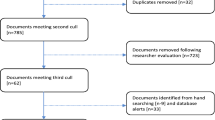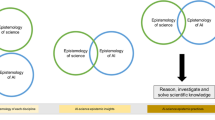Abstract
Textbooks remain an important resource in the hands of science teachers in ensuring that curricular aims and educational reforms are realised in school science. In a publication of the National Research Council (NRC) entitled “A Framework for K-12 Science Education,” emphasis is placed on students experiencing inquiry-based practices and not merely learning about them. These “practices” of science describe the behaviour in which real-life scientists engage while they investigate and construct model and theories about the natural and human world. The research reported in this article explored the extent to which these science practices are represented in South African Grade 12 Physical Sciences textbooks using qualitative content analysis. The analysis applied an adapted validated conceptual framework of the eight science practices that have been identified by the National Research Council. A Science Practice Continuum Rubric (SPCR) was developed for the coding of the textbooks. The analysis revealed that the science practices reflected in the textbooks were predominantly teacher-directed with only limited opportunity for student-engagement in the science practices. The findings of this analysis suggest that textbooks should be modified to sufficiently reflect practices at a higher level of student autonomy in order to improve the 21st-century learners’ scientific literacy in South African high school science.
Résumé
Les manuels constituent une ressource importante pour les enseignants en sciences afin que les réformes éducationnelles et les objectifs d’apprentissage soient réalisés dans les sciences à l’école. Dernièrement, l’objectif des réformes dans l’enseignement des sciences est passé de la recherche scientifique à la mise en pratique des principes scientifiques par les apprenants. Dans une publication du Conseil national de recherches (CNR) intitulée « A Framework for K-12 Science Education (Un cadre pour l’enseignement des sciences de la maternelle à la 12e année)», on met davantage l’accent sur l’expérience de pratiques fondées sur la recherche et non pas seulement sur l’acquisition de connaissances sur le sujet. Ces « pratiques» scientifiques décrivent comment les véritables scientifiques agissent lorsqu’ils étudient et construisent un modèle et des théories concernant les milieux naturel et humain. À travers une analyse de contenu qualitative, le travail de recherche abordé dans cet article explore dans quelle mesure ces pratiques scientifiques sont présentes dans les manuels de sciences physiques utilisés en 12e année en Afrique du Sud. L’analyse s’est appuyée sur une adaptation validée d’un cadre conceptuel tiré des huit pratiques scientifiques répertoriées par le Conseil national de recherches. Une rubrique du continuum de la pratique des sciences (RCPS) fut développée pour la codification des manuels. Il est ressorti de cette analyse que les pratiques scientifiques présentées dans les manuels s’avéraient surtout dirigées par l’enseignant et qu’elles ne donnaient lieu qu’à peu d’occasions pour l’élève de participer activement aux pratiques scientifiques. Les résultats de cette étude semblent indiquer que les manuels devraient être modifiés de façon suffisante afin de représenter des pratiques requérant un niveau d’autonomie plus élevé des élèves, ceci pour augmenter le niveau de connaissances scientifiques des apprenants du 21e siècle dans le domaine des sciences au secondaire en Afrique du Sud.
Similar content being viewed by others
References
Aldahmash, A. H., Mansour, N. S., Alshamrani, S. M., & Almohi, S. (2016). An analysis of activities in Saudi Arabian middle school science textbooks and workbooks for the inclusion of essential features of inquiry. Journal of Research in Science Education, 25(6), 1761-1793.
Aldahmash, A. H., & Omar, S. H. (2021). Analysis of activities included in Saudi Arabian chemistry textbooks for the inclusion of argumentation-driven inquiry skills. Studies in Educational Evaluation, 68, 1-7.
Babbie, E. (2001). The practice of social research. 9th edition. Belmont: Wadsworth
Banchi, H., & Bell, R. (2008). The many levels of inquiry. Science and Children, 46(2), 26-29.
Bell, R., Smetana, L., & Binns, I. (2005). Simplifying inquiry instruction. The Science Teacher, 72(7), 30-34.
Bybee, R. W. (2011). Scientific and engineering practices in K-12 classrooms: Understanding A framework for K-12 science education. Science and Children, 49(4), 10-16.
Chiappetta, E. L., & Fillman, D. A. (2007). Analysis of five high school Biology textbooks used in the United State for inclusion of the Nature of science. Journal of Science Education, 29(15), 1847-1868.
Chiappetta, E. L., Sethna, G. H., & Fillman, D. A. (1991). A qualitative analysis of high school chemistry textbooks for scientific literacy themes and expository learning aids. Journal of Research in Science Teaching, 28, 939-951.
Cohen, J. (1990). Things I have learned (so far). American Psychologist, 45, 1304-1312.
Crawford, B. A. (2014). From inquiry to scientific practices in the science classroom. In N.G. Lederman & S.K. Abell (Eds.), Handbook of Research on Science Education (pp. 515-544). New York, NY: Routledge.
Creswell, J. W. (2007). Designing and conducting mixed methods design. Thousand Oaks, CA: Sage.
Creswell, J. W. (2014). Research design: qualitative, quantitative, and mixed methods approach (4th ed.) Thousand Oaks, CA: Sage.
Department of Basic Education. (2011). Curriculum and assessment policy statement (CAPS): Physical Sciences. Pretoria: Government Printer.
Devetak, I., & Vogrinc, J. (2013). The criteria for evaluating the quality of the science textbooks. In M. S. Khine (Ed.), Critical analysis of science textbooks (pp. 3-15). Dordrecht: Springer.
Furtak, E. M., & Penuel, W. R. (2018). Coming to terms: addressing the persistence of “hands-on” and other reform terminology in the era of science as practice. Science Education, 103, 167-186.
Kayacan, K., & Ozluleci, M. (2021). An analysis of the seventh-grade science textbook in terms of science, engineering and entrepreneurship applications. Journal of Qualitative Research in Education, 27, 1-30.
Krajcik, J., Codere, S., Dahsah, C. et al. (2014). Planning instruction to meet the intent of the next generation science standards. Journal of Science Teacher Education 25, 157-175.
Krippendorff, K. (2004). Content Analysis: An Introduction to Its Methodology (2nd ed.). Thousand Oaks, CA: Sage. Organizational Research Methods, 13(2), 392–394.
Malcolm, C., & Alant, B. (2004). Finding direction when the ground is moving: science education research in South Africa. Studies in Science Education, 40, 49–104.
McKinney, R. (2013). Moving beyond the textbook: closing the book on textbook dependent classroom. The Whole Child Center, Oradell, New Jersey.
McNeill, K. L., Katsh-Singer, R. & Pelletier, P. (2015). Assessing science practices – moving your class along a continuum. Science Scope, 39(4), 21-28.
McNeill, K. L., Berland, L.K., & Pelletizer, P. (2017). Constructing explanation. In C.V. Schwarz, C. Passmore., & B.J. Reiser (Eds.), Helping students make sense of the world using next generation science and engineering practices (pp. 205–227). Arlington, VA: National Science Teachers Association Press.
Miller, E., Manz, E., Russ, R., Stroupe, D., & Berland, L. (2018). Addressing the epistemic elephant in the room: epistemic agency and the next generation science standards. Journal of Research in Science Teaching, 55(7), 1053-1075.
Mouton, J. (2008). How to succeed in your master's and doctoral studies. A South African Guide and resource book, Pretoria.
National Research Council (NRC). (2000). Inquiry and the national science education standards: a guide for teaching and learning. Washington, DC: National Academies Press.
National Research Council (NRC). (2012). A framework for K-12 science education: practices, crossing concepts, and core ideas. Washington, DC: National Academies Press.
National Research Council (NRC). (2013). Next generation science standards. For states, by states. Washington, DC: The National Academies Press.
Ndumanya, E., Ramnarain, U., & Wu, H.K. (2018). Developing a rubric for analysing the inclusion of "scientific practices" in physical sciences textbooks. In Proceedings of the International Conference on Education and New Developments, Budapest, Hungary, pp. 528–531. ISSN: 2184–044X. ISBN: 978–989–99864–8–0.
NGSS Lead States. (2013). Next generation science standards: for states, by states. Washington, DC: National Academies Press.
Niaz, M., & Maza, A. (2011). Nature of science in general chemistry textbooks. Springer Briefs in Education, 2, 1-13.
Osborne, J. (2014). Scientific Practices and Inquiry in the Science Classroom. In Handbook of Research on Science Education, edited by N. G. Lederman, 579–599. Mawah: NJ: Lawrence Erlbaum Associates Publishers.
Padayachee, K. (2012). A study of the analysis and use of life sciences textbooks for the nature of science. Unpublished master’s dissertation. Johannesburg: University of Johannesburg.
Penuel, W. R., & Reiser, B. J. (2018). Designing NGSS-aligned curriculum material. Committee to Revise America’s Lab Report. Washington, DC: National Academies of Science and Medicine.
Ramnarain, U. & Padayachee, K. (2015). A comparative analysis of South African Life Sciences and Biology textbooks for the inclusion of the nature of science. South African Journal of Education, 35(1), 1-8.
Saltidou, E., & Skoumios, M. (2017). Analysis of the Greek digital learning object repository from a learning activities perspective. European Journal of Education Studies, 3(12), 433-446.
Sund, R. B., & Trowbridge, L. W. (1973). Teaching science by inquiry in the secondary School. Ohio: Merrill.
Stavros, T. (2016). The scientific practices on the science’s textbook in the fifth grade of Greek primary school. American Journal of Education Research, 4(14), 1008-1014.
Tafoya, E., Small, D. W., & Knecht, P. (1980). Assessing inquiry potential: a tool for curriculum decision makers. School Science and Mathematics, 80, 43-48.
Author information
Authors and Affiliations
Corresponding author
Ethics declarations
Conflict of Interest
The authors declare no competing interests.
Additional information
Publisher's Note
Springer Nature remains neutral with regard to jurisdictional claims in published maps and institutional affiliations.
Rights and permissions
About this article
Cite this article
Ndumanya, E., Ramnarain, U. & Wu, HK. An Analysis of Selected South African Grade 12 Physical Sciences Textbooks for the Inclusion of the NGSS Science Practices. Can. J. Sci. Math. Techn. Educ. 21, 539–552 (2021). https://doi.org/10.1007/s42330-021-00169-z
Accepted:
Published:
Issue Date:
DOI: https://doi.org/10.1007/s42330-021-00169-z




